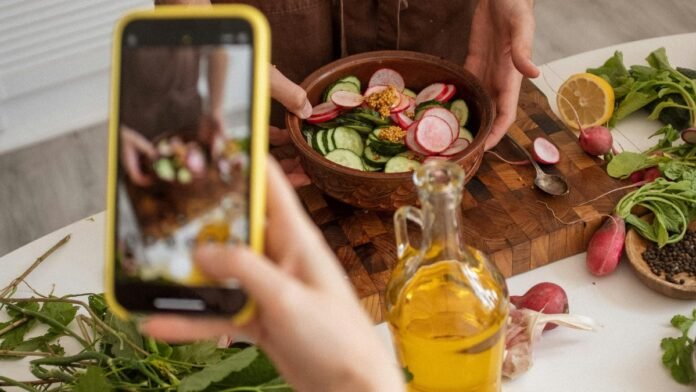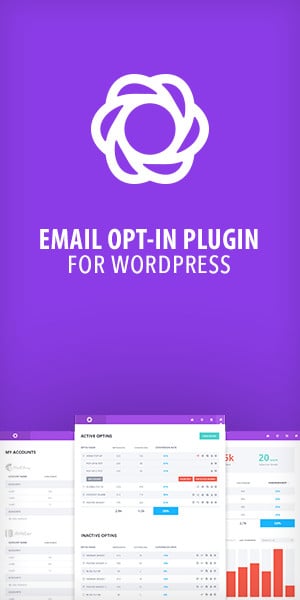Are you passionate about food? Do you dream of turning your love of cooking and eating into a successful career as a food blogger? Look no further – this ultimate guide has got you covered! This comprehensive article will take you on a journey from passion to profit, sharing all the essential steps and strategies to become a successful food blogger.
Whether you’re a seasoned cook or a beginner in the kitchen, this guide will provide you with the knowledge and tools to create mouth-watering content that captivates your readers. We’ll dive into the importance of finding your niche, developing a strong brand voice, creating visually stunning food photography, and crafting compelling recipes that keep your readers coming back for more.
Not only will you learn the secrets to growing your blog’s audience and increasing your reach, but we’ll also show you how to monetize your passion and turn it into a profitable business. From sponsored content to brand collaborations and beyond, we’ll walk you through the different avenues to generate income as a food blogger.
So, if you’re ready to embark on a delicious adventure filled with creativity, community, and culinary delights, let’s dive into this ultimate guide and make your food blogging dreams a reality.
Building a solid brand as a food blogger
In the vast sea of food bloggers, finding your niche is crucial for standing out and attracting a dedicated audience. A niche allows you to focus on a specific aspect of food that you are most passionate about. It could be anything from vegan desserts to gourmet BBQs. You can establish yourself as an expert in that area by narrowing your focus.
To find your niche, start by evaluating your interests and expertise. Consider what makes you unique and what type of food-related content you are most knowledgeable and passionate about. Research the market to see what niches are already saturated and look for gaps you can fill with your unique perspective.
Once you’ve identified your niche, it’s essential to do thorough keyword research to understand what people are searching for within that niche. Use tools like Google Keyword Planner or SEMrush to discover popular search terms and topics related to your niche. This will help you create content that resonates with your target audience and improves your chances of being discovered through search engines.
Creating high-quality and visually appealing food content
In the competitive world of food blogging, building a solid personal brand is essential for establishing credibility and gaining a loyal following. Your brand is more than just a logo or color scheme – it’s people’s overall impression and perception of you and your blog.
To build a strong brand, start by defining your unique value proposition. What sets you apart from other food bloggers? Is it your expertise in a specific cuisine? Your creative approach to recipe development? Your engaging storytelling? Identify your strengths and use them to shape your brand identity.
Next, develop a consistent brand voice that aligns with your target audience. Are you fun and playful? Are you sophisticated and elegant? Authentic and down-to-earth? Your brand voice should reflect your personality and resonate with your readers. Use this voice consistently across all your blog content, social media posts, and interactions with your audience.
Lastly, invest in professional branding elements such as a well-designed logo, cohesive color palette, and visually appealing website. These visual elements will help create a memorable and cohesive brand experience for your readers.
Developing a content strategy for your food blog
In food blogging, high-quality and visually appealing content is vital to capturing your readers’ attention and keeping them engaged. Great food photography can make all the difference in whether someone tries your recipe.
Start by investing in a good camera and learn the basics of photography. Understand concepts like composition, lighting, and styling. Experiment with different angles and props to create visually stunning images that make your food look irresistible.
In addition to photography, don’t forget the importance of well-written recipes. A clear and concise recipe is essential for your readers to recreate your dishes successfully. Break down the steps, provide accurate measurements, and offer helpful tips and variations.
Remember, food content goes beyond just recipes and photos. Consider incorporating other forms of content like videos, tutorials, and behind-the-scenes glimpses into your creative process. This variety will keep your audience engaged and entertained.
Social media marketing for food bloggers
A well-thought-out content strategy is crucial for the long-term success of your food blog. It helps you stay organized, consistent, and relevant in the eyes of your audience. Here are some critical steps to develop an effective content strategy:
- Define your goals: What do you want to achieve with your blog? Is it to inspire people to cook more at home? Share your culinary adventures. Promote a healthy lifestyle? Clearly define your goals to guide your content creation process.
- Understand your target audience: Who are your ideal readers? What are their interests, preferences, and pain points? Conduct audience research to gain insights into their needs and tailor your content to meet those needs.
- Plan your content calendar: Create a monthly or quarterly content calendar to outline the topics, recipes, and other forms of content you want to publish. This will help you stay organized and ensure a consistent flow of content.
- Mix up your content: Don’t limit yourself to recipes. Create a mix of different types of content, such as how-to guides, product reviews, restaurant recommendations, and personal stories. This variety will keep your blog exciting and cater to different audience preferences.
- Optimize for SEO: Incorporate relevant keywords into your blog posts to improve your visibility in search engines. Use Yoast SEO or Google Analytics tools to identify popular keywords and optimize your content.
By developing a content strategy, you can create valuable, engaging content that resonates with your audience and helps you achieve your blogging goals.
Collaborating with brands and monetizing your food blog
In today’s digital age, social media is essential for food bloggers to connect with their audience, increase their reach, and drive traffic to their blogs. Here are some tips for effective social media marketing:
- Choose the right platforms: Not all social media platforms are equal. Identify and focus your efforts on the platforms that align with your target audience. Instagram is particularly popular for food bloggers due to its visual nature.
- Optimize your profiles: Make sure your social media profiles are complete, professional-looking, and consistent with your blog branding. Use keywords in your bio and include a link to your blog.
- Create engaging content: Post high-quality photos, videos, and captions that resonate with your audience. Use hashtags strategically to increase your visibility and reach a wider audience.
- Engage with your audience: Respond promptly to comments, messages, and mentions. Show genuine interest in your followers’ lives and build relationships with them. This will help foster a sense of community and loyalty.
- Collaborate with influencers and brands: Collaborating with other food bloggers and brands can help you expand your reach and gain new followers. Look for collaboration opportunities on recipes, guest blog posts, or social media takeovers.
Remember, social media is not just about self-promotion. It’s about building a genuine connection with your audience and providing value through your content.
Growing your audience and engaging with your followers
As your food blog grows in popularity, you’ll have opportunities to collaborate with brands and monetize your content. Here are some common ways to generate income as a food blogger:
- Sponsored content: Brands may contact you to create sponsored content featuring their products. This could be recipe development, product reviews, or brand mentions in your blog posts or social media content. Make sure to disclose any sponsored content to maintain transparency with your audience.
- Affiliate marketing: Join affiliate programs and earn a commission for promoting products or services. Include affiliate links in your blog posts or social media content and earn a commission when someone purchases through your link.
- Product sales: Create and sell your products, such as e-books, cooking tools, or merchandise related to your brand. This allows you to monetize your expertise and provide value to your audience.
- Brand partnerships: Collaborate with brands on long-term partnerships or ambassadorships. This could involve creating exclusive recipes, participating in events, or representing the brand in your content.
- Ad revenue: Once your blog reaches a certain level of traffic, you can apply to display ads on your website. Platforms like Google AdSense allow you to earn revenue based on the number of ad impressions or clicks.
Remember, monetizing your blog should always be done in a way that aligns with your brand and provides value to your audience. Be selective about the brands you collaborate with and ensure that their products or services are a natural fit for your audience.
Tips for staying motivated and overcoming challenges as a food blogger
Building a loyal audience is critical to the success of your food blog. Here are some strategies to grow your audience and engage with your followers:
- Consistency is vital: Regularly publish high-quality content to establish yourself as a reliable source of inspiration and information. Stick to a consistent posting schedule and deliver what you promise to your audience.
- Optimize for search engines: Implement basic SEO strategies like using relevant keywords, writing meta descriptions, and optimizing your website speed. This will help your blog rank higher in search engine results and attract organic traffic.
- Guest posting: Write guest posts for other food blogs or collaborate on content with other bloggers in your niche. This allows you to tap into their existing audience and gain exposure to new readers.
- Interact with your audience: Respond to comments on your blog and social media posts. Ask questions to encourage engagement and create a sense of community. Consider hosting giveaways or contests to reward your loyal followers.
- Attend food-related events: Participate in food festivals, conferences, or workshops to network with other food bloggers and industry professionals. This can help you expand your reach and gain visibility within the food blogging community.
Remember, building an audience takes time and effort. Stay patient, focus on creating valuable content, and engage with your followers authentically.
Conclusion
While food blogging can be incredibly rewarding, it comes with its fair share of challenges. Here are some tips to stay motivated and overcome common challenges:
- Set realistic goals: Break down your long-term goals into smaller, achievable milestones. Celebrate each milestone to stay motivated and track your progress.
- Join a blogging community: Connect with other food bloggers through online forums, social media groups, or local meetups. Surrounding yourself with like-minded individuals can provide support, inspiration, and valuable insights.
- Experiment and evolve: Don’t be afraid to try new things and experiment with different content or recipes. The food blogging industry constantly evolves, and staying relevant requires adaptability and innovation.
- Take breaks and recharge: Burnout is common in blogging. Take regular breaks to rest, recharge, and pursue other hobbies. This will prevent creative fatigue and help you maintain a healthy work-life balance.
- Seek feedback and learn from it: Embrace constructive criticism and feedback from your audience, fellow bloggers, or industry professionals. Use it as an opportunity to improve and refine your skills.
Remember, success in food blogging is a journey, not a destination. Stay passionate, keep learning, and enjoy the process of creating and sharing your love for food with the world.




